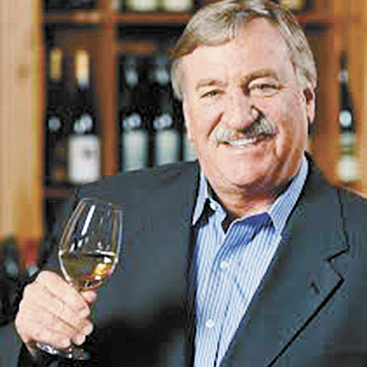Oregon Sets Sale
Consumer compass points in right direction
By Paul Omundson
Oregon’s wine industry continues to thrive despite the pandemic. After expanding direct-to-consumer (DTC) sales tactics, many wineries are delighting in their new-found successes. Wineries shipping internationally also found a receptive climate, especially in the Far East where Oregon’s prized world-class Pinot Noir and Chardonnay have gained international fans.
Retail sales, which spiked dramatically during COVID-19’s early months, still appear robust according to national sales data for grocery retail. The wineries represented include: A to Z Wineworks, Acrobat, The Great Oregon Wine Co. (Rascal, Duck Pond, Ransom), Erath, Firesteed, King Estate, Union Wine Co., Willamette Valley Vineyards and Wine By Joe. When Nielsen data reports Oregon retail sales, its numbers are mostly from these producers. Sales results of the other 97 percent of Oregon’s 800 wineries remain elusive. Their small- to medium-niche sales to specialty wine shops and other kinds of outlets, nationally and internationally, are difficult to track.
Both grocery stores and specialty shops play a role. It’s in grocery stores where a lot of people first discover Oregon wine. As their taste develops, they don’t necessarily stay in the grocery aisles for their wine.
Slow climb for on-premise
At a time when mandatory restrictions, such as masks and social distancing, would otherwise greatly diminish the typical wine experience, Oregon wineries have risen to the occasion with creative solutions. Visitors like the new-found privacy and enjoy expanded, artful seating outdoors, even into the vineyards. The trick will be transferring that outdoor success to indoors this fall and winter. Besides the reimagined in-person tastings, wineries have also embraced virtual wine tastings, fast becoming a norm and an effective sales tool.
“In our area, tasting room sales during the height of the summer season reached about 40 percent of pre-COVID levels,” reported Jennifer Kerrigan, president of the Southern Oregon Winery Association and Del Rio Vineyards’ national sales manager. “We’re still looking for out-of-state tourists.” But, she added, “locals have stepped it up and really shown support. They’re visiting wineries and buying wine” (at higher levels per visitor than a year ago).
It helps to have proximity to Interstate-5. Jessica Thomas, a team member of Sweet Cheeks Winery and president of the Southern Willamette Valley Wineries Association, says at the height of the summer season, wineries in the Eugene area that opened for on-site consumption, actually matched, or came close to tasting room sales levels for the same period in 2019.
“But now the big challenge is going indoors, where social distancing guidelines will cut about 70% of what our outdoor capacity was,” Thomas added. “But we’re a resilient bunch. We’ll find a way to make it work. This may mean expanding local delivery, finding spaces to do ‘pop-up’ tasting rooms or something completely new.”
With individual sales varying widely, consensus seems to be that Oregon wineries have recaptured about half the volume of their on-premise sales and tasting room dollars from before the virus.*
Doing what it takes
Oregon wineries are, indeed, a resilient bunch. Case in point: Domaine Drouhin Oregon (DDO), in the Dundee Hills, owned by the renowned Drouhin family of Burgundy, France, and a major influence on Oregon wine for three decades.
“We’ve upped our digital presence, social media, our e-mail offers and just our whole general outreach,” said David Millman, DDO managing director. “We rolled out a new website in April and transitioned to a new sales platform to give us more flexibility.” In addition, on-premise visitors are treated to more expansive outdoor seating choices (reservations required), with safety guidelines in the forefront but not diminishing the experience.
“In addition to our wine club members and longtime customers, we’re seeing a very nice stream of new guests,” Millman commented. “I think that’s a sign of the continuing interest in Oregon wine and how accessible wine country is. It’s also a function of Oregon wine’s ability to reach out to new guests in a better, more compelling way. Everything goes hand in hand.”
Millman described international perception of Oregon as “this discovery zone, backed up by great vineyards and a relentlessly good story.” He indicated current wine hot spots for Oregon are Canada, The Philippines, Singapore, Denmark and Sweden.
Another global sales expert, Randy Ford, vice president of sales at Cristom Vineyards, has been selling Oregon wines for more than 25 years. Randy has worked directly for family-owned Oregon wineries over the last 13 years and today, splits his time between his Central Florida residence and the winery in the Eola-Amity Hills.
“Growing markets for Cristom include the East Coast and central regions of the U.S., Western Europe and Asia,” he said. “All have thriving artisan food scenes and access to comparable wines to go with them… It’s not hard to connect the dots,” Ford smiled. “In the early days, my biggest challenge was that Oregon Pinot Noir was relatively unknown and more expensive than California wines (about 25% to 30% higher) and I had to justify quality to the dollar…” But Ford loves his ace in the hole: “There’s something about terroir-driven, authentic wines of quality that always shine through.”
“Oregon’s world-class Pinot Noir and Chardonnay go hand-in-hand,” Ford added. “They are both classic, naturally acid-driven when grown in cool climates, with a propensity to capture their own unique terroir — and as such, they serve as terrific restaurant wines. Those purchasing internationally have a sophisticated palate and deep appreciation for the versatility of these two varietals — and, we’re just getting started,” Ford predicted. “These expressions from the Willamette Valley are paving the way for more world-class wines emerging from Oregon.”
Ford noted that when he joined Cristom in 2017, the winery was in some 20 international markets. “Now, we’re in close to 40 countries. There’s a global thirst for Oregon wines. So much is still untapped.”
One looming question for these new times: Are large Oregon wineries gaining a sizeable advantage over smaller brands? “In the end, it’s more about agility and nimbleness,” explained Steve Thomson, a veteran sales leader and executive, not to mention the vice-chairman of the OWB Export Committee, among other titles. “With the battle of value vs volume, in the long run, it comes down to margin, channel strategy, reach and balance. And also in a very noisy world of tens of thousands of wine brands, it’s about positioning and consistency.”
*Note: Oregon Wine Board gathers detailed Nielsen sales data and information on COVID-19 impact that will be included in its annual 52-week performance report of 2020, available early next year.
A Word from Wine Industry Experts
It’s going to take more than a lingering global pandemic and late summer’s wildfire smoke to derail long-term growth in Oregon wine. Although the obstacles appear daunting, the following three experts believe the state’s sparkle will only get brighter.

Rob McMillan > Executive vice president of Silicon Valley Bank in St. Helena, California, a top international wine business analyst and author of the annual “State of the Wine Industry” report distributed worldwide.
When McMillan started his wine industry lending unit for Silicon Valley Bank in 1991, he had keen foresight. “I saw a trend developing in Oregon; ‘premiumization’ is my word for it, and along with that, boomers were beginning to drive the market. That fueled a demand for high-end quality wines. Oregon has delivered, and now, with Chardonnay joining Pinot Noir as the state’s other great quality wine, you’ve got a one-two premium wine combination in the market, and that’s compelling.”
He added, “Younger consumers look for special, interesting wine. Oregon’s individual terroir-driven wines such as these appeal to them, and they’re still in the process of discovering Pinot Noir and Chardonnay. Oregon has developed its own flavor profile, and one of the things it has done well is protect its brand, much better than California, which allowed its brand to be sold off in mass-produced wines. What you’ve got going forward in Oregon is a well-defined, appealing sense of individual terroir for your flagship wines.”

Christian Miller > Market research, brand and category management leader for more than 20 years, and owner of Full Glass Research, which produces economic impact reports and consumer research for the industry.
“What made Oregon distinct right from the start was organizing around higher-priced, premium wines,” said Miller. “There aren’t any Oregon jug wines. Your climate and soils in Oregon don’t lend themselves to that approach.” He further mused, “Oregon’s main problem for a long time was not enough money for marketing and not good distribution outside local areas. That has changed a lot in the past 10 years.”
Miller also raises another issue, an aspect of Nielsen data, driven by national grocery, mass market and liquor chain sales. The process doesn’t catch sales data from small craft wineries that don’t have mega sales channels but instead carve out their own individual eclectic sales mixes with a variety of small and/or specialty wine shops. “Nielsen naturally underestimates the impact of that segment,” Miller explained. “And [that segment] makes up the vast majority of Oregon wineries. It’s also important to note that in or out of Nielsen data, those price segments of the wines they make hold up their value quite well.”

Jim Trezise > President of WineAmerica, the only national wine industry association in the country.
With a twinkle in his eye, Trezise reveals the “brilliant” idea he says helped put Oregon wine on the map: “That was the start of the annual Oregon Pinot Camp that began in 2000. Through the years it’s been a very successful celebration and branding of Oregon Pinot Noir. Your winemakers said, ‘This is our grape; let’s go for it.’ And that started a lot of creative marketing.”
He continued, “I judge a lot of wine competitions around the country and taking part in those it became apparent that everybody knows about Oregon, and not just its top wine, Pinot Noir, but other varieties it produces as well. It’s earned a quality reputation.” Trezise expressed admiration for the state’s diversity in wine production but also its unity. “You have a lot of different groups, regions and wines but you all have a commitment to make Oregon wines, in general, shine.”











